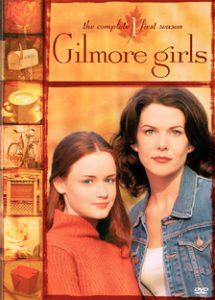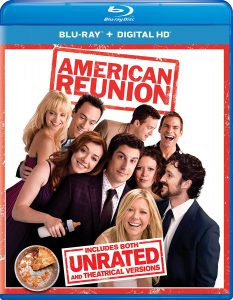I distinctly — and fondly — remember how shocking “American Pie” was when it came out in 1999, starting with Jim’s dad (Eugene Levy) walking in on Jim (Jason Biggs), continuing through the pie scene and peaking with Michelle’s (Alyson Hannigan) flute-related revelation.
I recently rewatched the film in the quiet of my living room and was struck by how tame it is compared to newer films like “The Hangover,” “The Change-Up” and “Horrible Bosses,” where raunch is expected. “American Pie” started the ball rolling, but it’s rolling much faster now.
“American Reunion,” the fourth entry to feature Jim and his friends (I won’t address the four straight-to-video entries here), has one image that pushes the surprise meter (no, I did not expect to see that, nor did I care to!), and one solid bathroom-humor gross-out gag. But mostly “American Reunion” works because of the simple pleasure of seeing old friends again. We get call-backs to the classic moments, such as the Stifler-Finch rivalry, and more notably, a continuation of the relationships.
The main theme of the saga is that relationships are bizarre and awkward to begin with, and sex adds another layer to that; the opening scene of “Reunion” revisits this nicely as Jim and Michelle’s kid walks in on each of them in compromising positions (“When did you learn to open doors!?” a horrified Jim asks).
But the secret heart of the series is Oz and Heather. Chris Klein and Mena Suvari infuse their scenes in “American Pie” with adorable awkwardness, and they come away with the deepest, healthiest connection by the film’s end, one where sex is a peripheral element. (They also are boosted by a lot of Bic Runga songs playing behind their scenes; I gave “Good Morning Baby” an embarrassing number of spins in the summer of ’99).
But Heather and Oz were given short shrift in “American Pie 2” (2001) and they weren’t in “American Wedding” (2003) at all, so in “Reunion,” this relationship doesn’t feel at all played out. It still feels the most real and sweet, and more worthy of giggles than guffaws.
At first glance, the gang seems to have changed in external ways — spouses, kids, careers — but not internally. Stifler (Seann William Scott), in particular, pushes the theory that since high school was a one big fun party, life should be that way too; he shows this through his actions (hitting on high school girls) and talk (“Who’s this d—-bag?”), of course, but also through more humanizing moments. (I admit to getting slightly teared up over Stifler’s entry on the wish page in the Class of 1999 yearbook.)
Still, with the gang in their early 30s, humorous universal situations crop up. “Reunion” especially hits its awkward comedy sweet spot with the introduction of the Levensteins’ neighbor Kali (Ali Cobrin) — Jim had babysat her back in the day, but she’s not a kid anymore (this being a movie, she’s incredibly hot), and she wants Jim to come to her 18th birthday party.

Humorous sequences evolve from this premise, but mostly I smiled just because Biggs’ facial expressions are so resonantly spot-on through it all. Come to think of it, that’s why Levy is so convincing as Jim’s dad — he also sells the awkwardness through facial expressions (This was especially important in the early screenings of “American Pie,” when gasps and laughs drowned out a lot of dialog).
Obviously, “American Reunion” isn’t as shocking or groundbreaking as the original; it’s not even as funny. But now that the laughter has died down, the series’ focus emerges. It’s about the melancholy and poignancy of growing up, and this resonates in both “American Reunion” and when looking back at “American Pie” as a frozen moment in time for Jim, Kev, Oz, Finch … and film comedy history.

